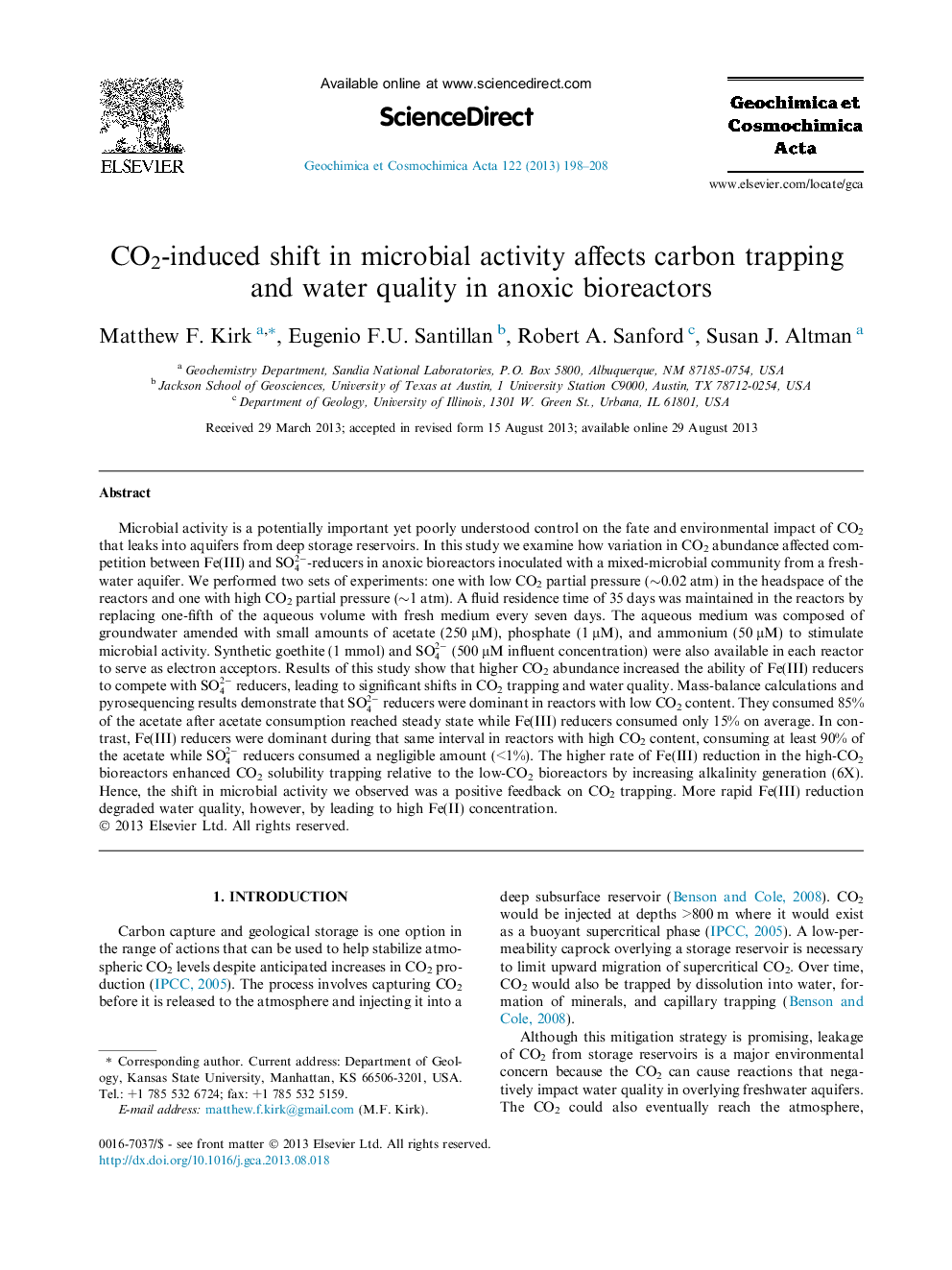| کد مقاله | کد نشریه | سال انتشار | مقاله انگلیسی | نسخه تمام متن |
|---|---|---|---|---|
| 6438814 | 1638035 | 2013 | 11 صفحه PDF | دانلود رایگان |
عنوان انگلیسی مقاله ISI
CO2-induced shift in microbial activity affects carbon trapping and water quality in anoxic bioreactors
دانلود مقاله + سفارش ترجمه
دانلود مقاله ISI انگلیسی
رایگان برای ایرانیان
موضوعات مرتبط
مهندسی و علوم پایه
علوم زمین و سیارات
ژئوشیمی و پترولوژی
پیش نمایش صفحه اول مقاله

چکیده انگلیسی
Microbial activity is a potentially important yet poorly understood control on the fate and environmental impact of CO2 that leaks into aquifers from deep storage reservoirs. In this study we examine how variation in CO2 abundance affected competition between Fe(III) and SO42--reducers in anoxic bioreactors inoculated with a mixed-microbial community from a freshwater aquifer. We performed two sets of experiments: one with low CO2 partial pressure (â¼0.02 atm) in the headspace of the reactors and one with high CO2 partial pressure (â¼1 atm). A fluid residence time of 35 days was maintained in the reactors by replacing one-fifth of the aqueous volume with fresh medium every seven days. The aqueous medium was composed of groundwater amended with small amounts of acetate (250 μM), phosphate (1 μM), and ammonium (50 μM) to stimulate microbial activity. Synthetic goethite (1 mmol) and SO42- (500 μM influent concentration) were also available in each reactor to serve as electron acceptors. Results of this study show that higher CO2 abundance increased the ability of Fe(III) reducers to compete with SO42- reducers, leading to significant shifts in CO2 trapping and water quality. Mass-balance calculations and pyrosequencing results demonstrate that SO42- reducers were dominant in reactors with low CO2 content. They consumed 85% of the acetate after acetate consumption reached steady state while Fe(III) reducers consumed only 15% on average. In contrast, Fe(III) reducers were dominant during that same interval in reactors with high CO2 content, consuming at least 90% of the acetate while SO42- reducers consumed a negligible amount (<1%). The higher rate of Fe(III) reduction in the high-CO2 bioreactors enhanced CO2 solubility trapping relative to the low-CO2 bioreactors by increasing alkalinity generation (6X). Hence, the shift in microbial activity we observed was a positive feedback on CO2 trapping. More rapid Fe(III) reduction degraded water quality, however, by leading to high Fe(II) concentration.
ناشر
Database: Elsevier - ScienceDirect (ساینس دایرکت)
Journal: Geochimica et Cosmochimica Acta - Volume 122, 1 December 2013, Pages 198-208
Journal: Geochimica et Cosmochimica Acta - Volume 122, 1 December 2013, Pages 198-208
نویسندگان
Matthew F. Kirk, Eugenio F.U. Santillan, Robert A. Sanford, Susan J. Altman,